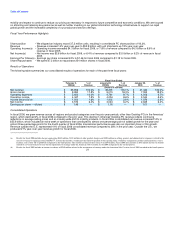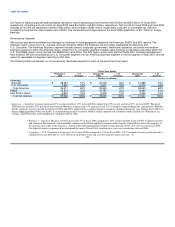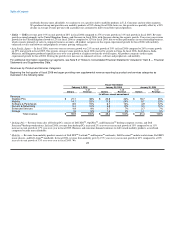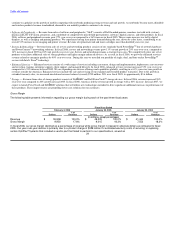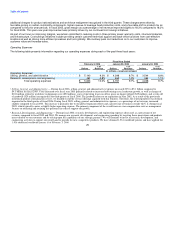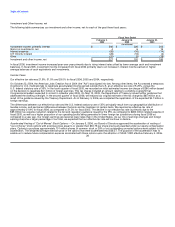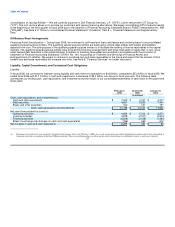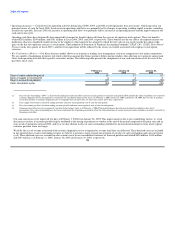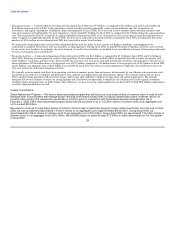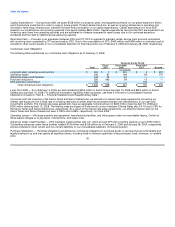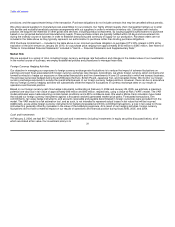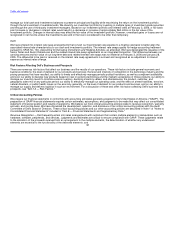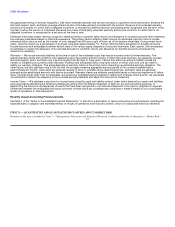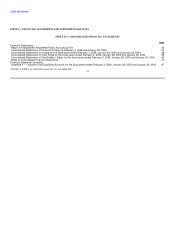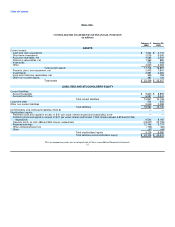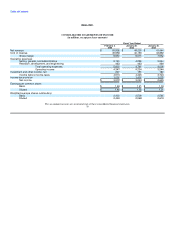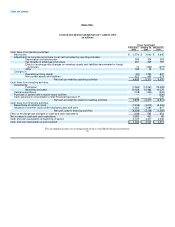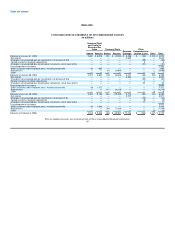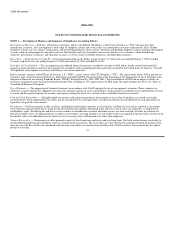Dell 2005 Annual Report Download - page 34
Download and view the complete annual report
Please find page 34 of the 2005 Dell annual report below. You can navigate through the pages in the report by either clicking on the pages listed below, or by using the keyword search tool below to find specific information within the annual report.
Table of Contents
provisions; and the approximate timing of the transaction. Purchase obligations do not include contracts that may be cancelled without penalty.
We utilize several suppliers to manufacture sub-assemblies for our products. Our highly efficient supply chain management allows us to enter
into flexible and mutually beneficial purchase arrangements with our suppliers in order to minimize inventory risk. Consistent with industry
practice, we acquire raw materials or other goods and services, including product components, by issuing suppliers authorizations to purchase
based on our projected demand and manufacturing needs. These purchase orders are typically fulfilled within 30 days and are entered into
during the ordinary course of business in order to establish best pricing and continuity of supply for our production. Purchase orders are not
included in the table above as they typically represent our authorization to purchase rather than binding purchase obligations.
DFS Purchase Commitment — Included in the table above is our minimum purchase obligation to purchase CIT's 30% interest in DFS at the
expiration of the joint venture on January 29, 2010, for a purchase price ranging from approximately $100 million to $345 million. See Note 6 of
"Notes to Consolidated Financial Statements" included in "Item 8 — Financial Statements and Supplementary Data."
Market Risk
We are exposed to a variety of risks, including foreign currency exchange rate fluctuations and changes in the market value of our investments.
In the normal course of business, we employ established policies and procedures to manage these risks.
Foreign Currency Hedging Activities
Our objective in managing our exposures to foreign currency exchange rate fluctuations is to reduce the impact of adverse fluctuations on
earnings and cash flows associated with foreign currency exchange rate changes. Accordingly, we utilize foreign currency option contracts and
forward contracts to hedge our exposure on forecasted transactions and firm commitments in over 20 currencies in which we transact business.
The principal currencies hedged during fiscal 2006 were the Euro, British Pound, Japanese Yen, and Canadian Dollar. We monitor our foreign
currency exchange exposures to ensure the overall effectiveness of our foreign currency hedge positions. However, there can be no assurance
that our foreign currency hedging activities will substantially offset the impact of fluctuations in currency exchange rates on our results of
operations and financial position.
Based on our foreign currency cash flow hedge instruments outstanding at February 3, 2006 and January 28, 2005, we estimate a maximum
potential one-day loss in fair value of approximately $46 million and $43 million, respectively, using a Value-at-Risk ("VAR") model. The VAR
model estimates were made assuming normal market conditions and a 95% confidence level. We used a Monte Carlo simulation type model
that valued our foreign currency instruments against a thousand randomly generated market price paths. Forecasted transactions, firm
commitments, fair value hedge instruments, and accounts receivable and payable denominated in foreign currencies were excluded from the
model. The VAR model is a risk estimation tool, and as such, is not intended to represent actual losses in fair value that will be incurred.
Additionally, as we utilize foreign currency instruments for hedging forecasted and firmly committed transactions, a loss in fair value for those
instruments is generally offset by increases in the value of the underlying exposure. As a result of our hedging activities, foreign currency
fluctuations did not have a material impact on our results of operations and financial position during fiscal 2006, 2005, and 2004.
Cash and Investments
At February 3, 2006, we had $11.7 billion of total cash and investments (including investments in equity securities discussed below), all of
which are stated at fair value. Our investment policy is to 31


